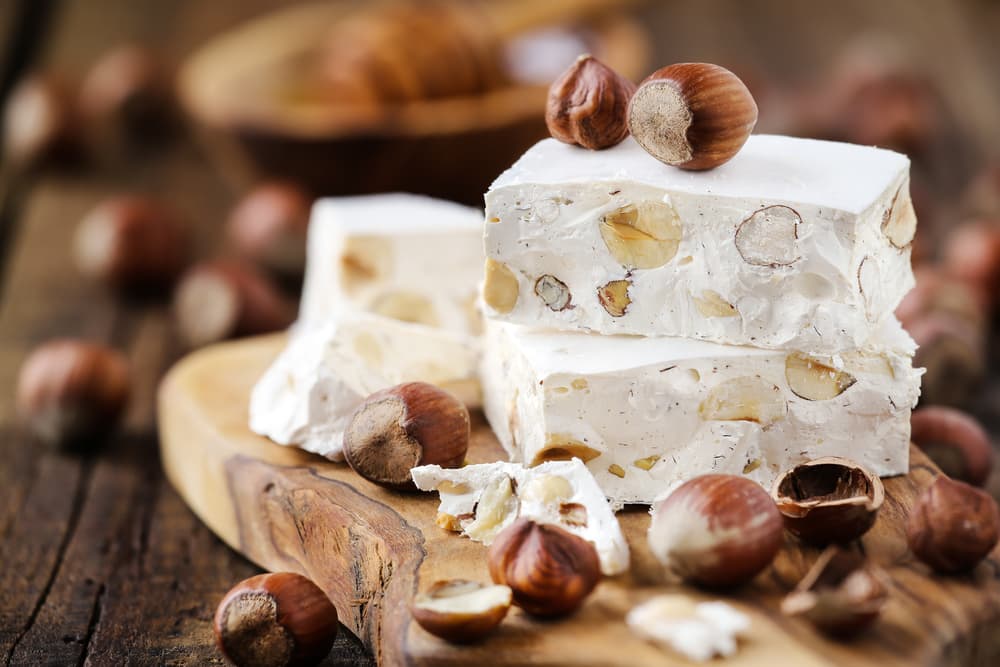

While it may seem a typical Mediterranean product today, this mixture of stiffly beaten egg whites, honey and broken or ground nuts is thought to have originated in Turkey. In the 10th century, an Arabic book from Baghdad mentions a recipe from Harran, a town in southern Turkey. In the following centuries, traces of nougat - under different names and with slightly varying compositions - can be found in Morocco, Malta, Algeria, Greece, Iran and Egypt. In the 16th century, it was mainly in Andalusia and Italy that this historic confection was popular, with Nostradamus going so far as to attribute its paternity to Italians.
In France, the 1st appearance of "noga", an Occitan name derived from the word "noix" (nuts), is attested in 1595 in a book... on pharmacy! As almond trees were particularly cultivated in Provence at the time, it was in this region and Languedoc that most nougat was made. Since the 17th century, nougat has been one of the 13 desserts served at the Provencal Christmas table.
A direct descendant of Arab, Catalan and Italian nougats, the recipe, which originated in the 2nd town of the Drôme, dates back to 1701. By refining the composition and defining the proportions of ingredients to be respected, this Montilian version has given its letters of nobility to the world-renowned sweet.
The composition of a Montélimar nougat: